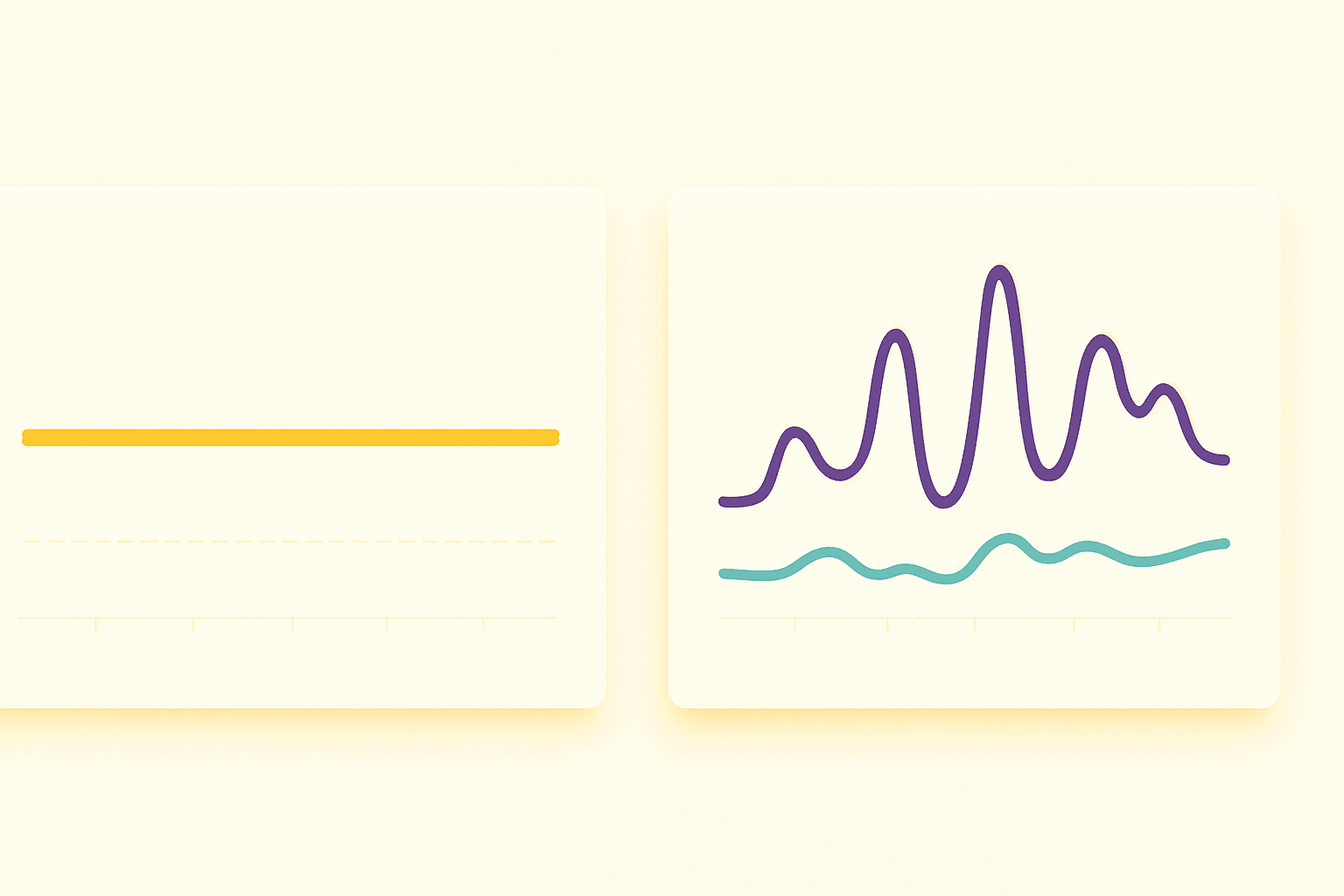
Why Average Response Time Can Be Misleading: A Case for Percentile Metrics
- Published On: July 29, 2025
- Category: Response Time Monitoring
- Read Time: 4 min
Relying on average response time in API monitoring can be dangerously misleading. This article explores how percentile-based metrics—like the 95th or 99th percentile—reveal the true user experience and help detect hidden performance problems before they impact your users.
In the world of API monitoring, average response time has long been used as a standard metric. But here's the catch: it often lies. While your dashboard might show a neat "300ms average," users could still be experiencing frustrating delays. So what's going on?
Why Average Response Time Isn’t Enough
Averages are easily skewed by outliers. One very fast or very slow response can distort the truth:
- They don’t reflect spikes or patterns in performance.
- They hide the worst-case scenarios.
- They give a false sense of stability, especially during load or traffic anomalies.
In short, average response time tells only part of the story.

Real-World Example
Let’s say your API has the following response times during a minute:
250ms, 260ms, 270ms, 290ms, 300ms, 310ms, 320ms, 330ms, 340ms, 3,000ms
The average is about 462ms — not too bad at first glance. But that last spike (3 seconds!) could ruin a user’s checkout experience. Your average metric masks that critical delay.
The Case for Percentile Metrics
Percentiles, especially P95 and P99, offer a more honest view:
- P95 shows the response time under which 95% of requests fall.
- This highlights edge cases and performance outliers.
- It aligns better with user experience, where the slowest responses often matter most.
Percentile metrics help teams detect minor issues before they become major problems.

How Watchman Tower Helps
Watchman Tower goes beyond average values. With advanced response time monitoring, you get:
- P50, P75, P95, and P99 metrics visualized in real time
- Alerts based on percentile thresholds, not just averages
- Clear visibility into response time distribution, even across regions
- Easy-to-read dashboards that make performance anomalies obvious
This means better insights, faster diagnosis, and happier users.
Conclusion
If you're still relying on averages, you're probably missing what matters.
Start tracking your API’s performance the smart way—with percentile metrics.
Free plan available. No credit card needed.
FAQ
Blog Posts
How Slow Is Too Slow? When Your API Is Technically Fine but Functionally Broken...
Your API might return 200 OK, but if it takes 5 seconds to respond, your users won’t be OK. In this article, we explore why monitoring response time matters just as much as uptime — with real examples and a better solution.
Learn more about How Slow Is Too Slow? When Your API Is Technically Fine but Functionally BrokenHow Watchman Tower Uses Real Response Time Monitoring to Reveal True Website Performance...
Your website is online — but is it fast enough? Watchman Tower tracks real response times, so you know exactly how your site behaves.
Learn more about How Watchman Tower Uses Real Response Time Monitoring to Reveal True Website Performance


